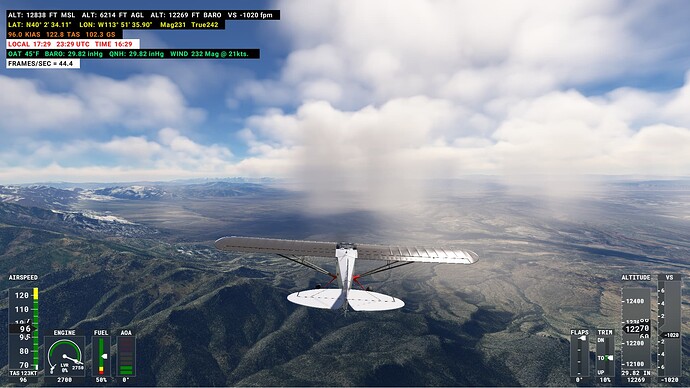Altimeter settings are always given in units corrected to sea level pressure. That’s what you use to set your altimeter and it gives you an MSL altitude accordingly.
But unless the airport is at sea level that’s not the actual air pressure. The actual air pressure decreases with altitude, as you’d expect. The trick is the altimeter has a set of sealed aneroid wafers that are permanently calibrated to sea level pressure, but surrounding those, in the altimeter case, the pressure varies with the pressure coming in from the static port and the wafers expand and contract, pushing on a geared mechanism that drives the altimeter needles.
If the altimeter wasn’t adjustable (always standard), we could just read our altitude straight off the altimeter face all day and we’d mostly avoid each other by flying assigned altitudes alone. This is what we do when we set it to “standard,” (29.92 in the US), and the altitudes displayed at that point are known as pressure altitudes. This works above 18,000’ in the CONUS because there’s nothing to hit up there (and there’s various margins built into that).
However, because pressure/weather systems move about, the static pressure is always in flux and causing our indicated altitude to change. A mis-set altimeter could run us into terrain and obstacles, the elevations for which are a known geometric quantity. Thus, we have the ability to adjust our altimeter with the kollsman window to a localized altimeter setting, relative to adjusted sea level pressure. If we (are able to) instead adjust the kollsman window to the actual outside static pressure, it would read zero. If did that while sitting on the airport, we could use that to derive AGL altitude, but it’s not recommended outside of very limited and controlled cases (like some aerobatics). But wait, there’s more…
The initial premise that @b3burner is describing is likely due to the way the atmosphere expands and contracts due to heating. So while your geometric altitude might be, say 9,000 MSL, on a hot day the atmosphere expands and the pressure altitude (relative to sea level) of 9,000 might actually be above the geometric altitude of 9,000, even with a correct and current local altimeter setting. This is because the column of air is stretched out and you have to go farther up, geometrically, to get to the same density.
Therefore in that case you have to climb higher than 9,000 to read 9,000. This gives meaning to the adage “low to high, you’re in the sky,” which applies to both ambient pressure and temperature changes. This can have a very detrimental effect when it is extremely cold, when the inverse occurs. In that case, the atmosphere is compressed, isobaric (same) pressure levels lowered, and for your altimeter to read 9,000’, you might actually have to fly below the geometric altitude of 9,000. As you might expect, this can have major implications on terrain and obstacle avoidance. So much so that instrument approaches into designated “cold weather airports” have limitations and altitude corrections that have to be manually applied (if you don’t have a system that compensates for the temps).
Tl;dr, the ambient temperature is probably causing the discrepancy
